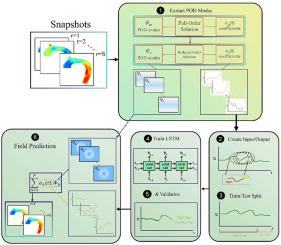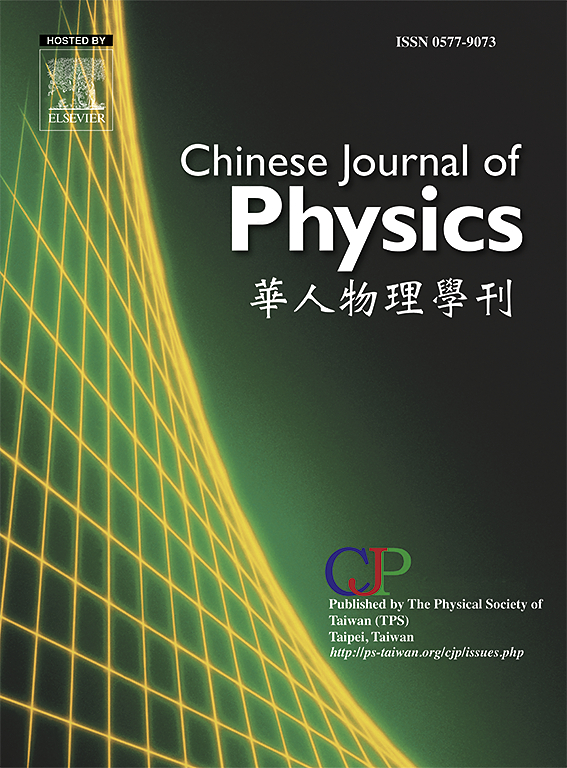Predicting Hemodynamic Complexity in Thoracic Aortic Aneurysms with a POD–LSTM Surrogate Model
IF 4.6
2区 物理与天体物理
Q1 PHYSICS, MULTIDISCIPLINARY
引用次数: 0
Abstract
Accurate prediction of blood flow dynamics in Thoracic Aortic Aneurysms (TAA) is essential for rupture risk assessment, yet remains computationally demanding with conventional CFD approaches. This study explores hemodynamic factors associated with TAA rupture using a Predictive Surrogate Model (PSM) integrating Proper Orthogonal Decomposition (POD) and Long Short-Term Memory (LSTM) networks. Transient hemodynamic parameters—including wall shear stress, pressure, and blood flow velocity—were simulated via finite volume-based computational fluid dynamics (CFD) across a cardiac cycle. The PSM framework leverages POD for dimensionality reduction and LSTM for temporal dynamics prediction, enabling efficient reconstruction of hemodynamic fields. A comprehensive evaluation of reconstruction errors across varying POD modes quantified deviations between the Full Order Model (FOM) and Reduced Order Model (ROM), validating the accuracy of the surrogate approach. Comparative analyses between CFD and PSM results demonstrated the machine learning model’s capability to capture complex flow patterns, with additional contrasts highlighting hemodynamic distinctions in normal vessels versus TAA cases. Results revealed elevated velocity fluctuations in the TAA region, increasing flow complexity and reconstruction challenges. This work underscores the potential of hybrid POD-LSTM frameworks for rapid hemodynamic assessment in clinical settings, while emphasizing the need for advanced modeling to address turbulence and biomechanical instabilities in aneurysmal pathologies. Our results indicate that the performed hybrid technique could efficiently (more than 85 %) predict the hemodynamic factors on the saccular surface TAA.

用POD-LSTM替代模型预测胸主动脉瘤血流动力学复杂性
准确预测胸主动脉瘤(TAA)的血流动力学对其破裂风险评估至关重要,但传统CFD方法的计算要求仍然很高。本研究使用整合适当正交分解(POD)和长短期记忆(LSTM)网络的预测代理模型(PSM)探讨与TAA破裂相关的血流动力学因素。通过基于有限体积的计算流体动力学(CFD)模拟心脏周期内的瞬时血流动力学参数,包括壁面剪切应力、压力和血流速度。PSM框架利用POD进行降维,LSTM进行时间动力学预测,从而有效地重建血流动力学场。对不同POD模式下重构误差的综合评估量化了全阶模型(FOM)和降阶模型(ROM)之间的偏差,验证了替代方法的准确性。CFD和PSM结果的对比分析表明,机器学习模型能够捕获复杂的血流模式,并通过额外的对比突出了正常血管与TAA病例的血流动力学差异。结果表明,TAA区域的流速波动加剧,增加了流动复杂性和重建挑战。这项工作强调了混合POD-LSTM框架在临床环境中快速血流动力学评估的潜力,同时强调了需要先进的建模来解决动脉瘤病理中的湍流和生物力学不稳定性。我们的结果表明,所进行的混合技术可以有效地(超过85%)预测球囊表面TAA的血流动力学因素。
本文章由计算机程序翻译,如有差异,请以英文原文为准。
求助全文
约1分钟内获得全文
求助全文
来源期刊

Chinese Journal of Physics
物理-物理:综合
CiteScore
8.50
自引率
10.00%
发文量
361
审稿时长
44 days
期刊介绍:
The Chinese Journal of Physics publishes important advances in various branches in physics, including statistical and biophysical physics, condensed matter physics, atomic/molecular physics, optics, particle physics and nuclear physics.
The editors welcome manuscripts on:
-General Physics: Statistical and Quantum Mechanics, etc.-
Gravitation and Astrophysics-
Elementary Particles and Fields-
Nuclear Physics-
Atomic, Molecular, and Optical Physics-
Quantum Information and Quantum Computation-
Fluid Dynamics, Nonlinear Dynamics, Chaos, and Complex Networks-
Plasma and Beam Physics-
Condensed Matter: Structure, etc.-
Condensed Matter: Electronic Properties, etc.-
Polymer, Soft Matter, Biological, and Interdisciplinary Physics.
CJP publishes regular research papers, feature articles and review papers.
 求助内容:
求助内容: 应助结果提醒方式:
应助结果提醒方式:


